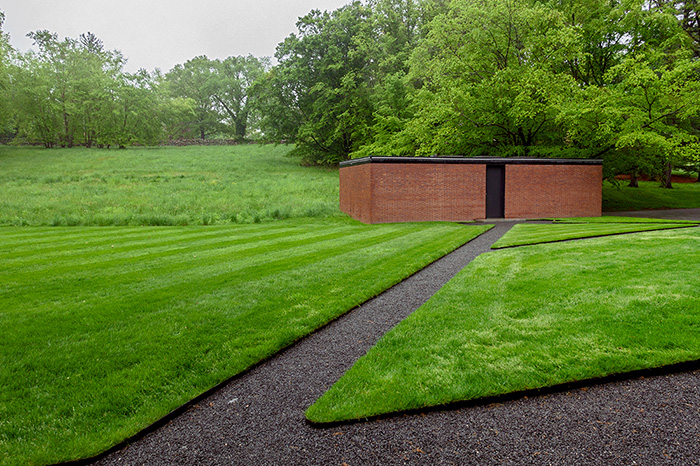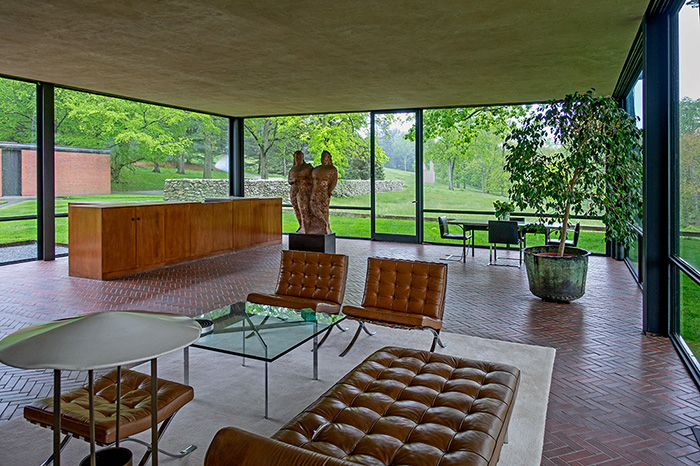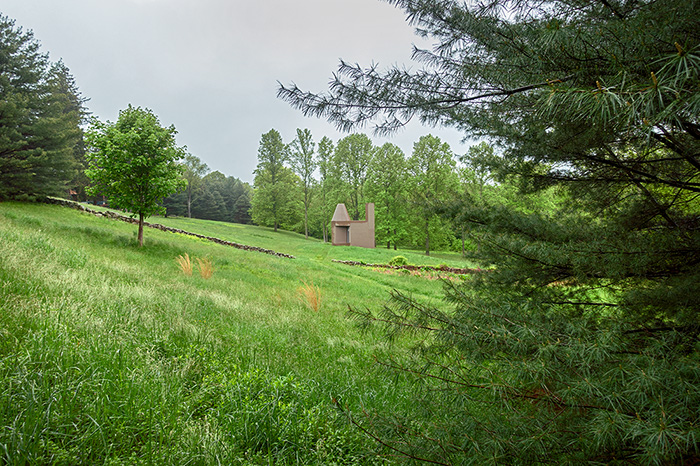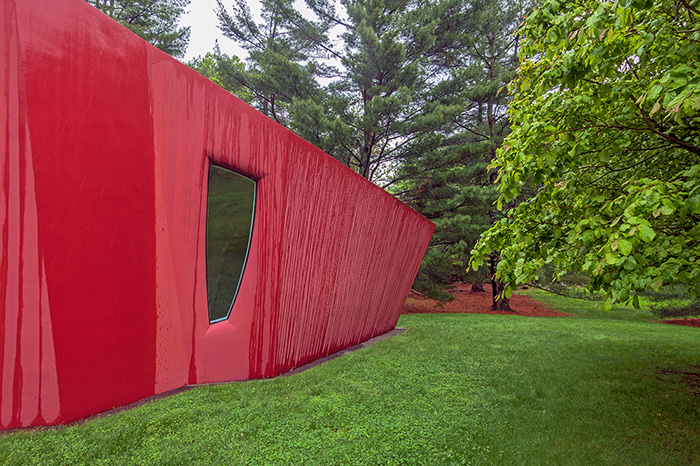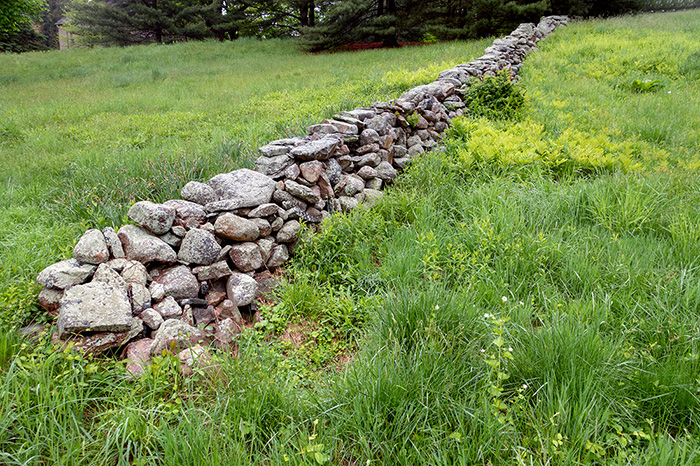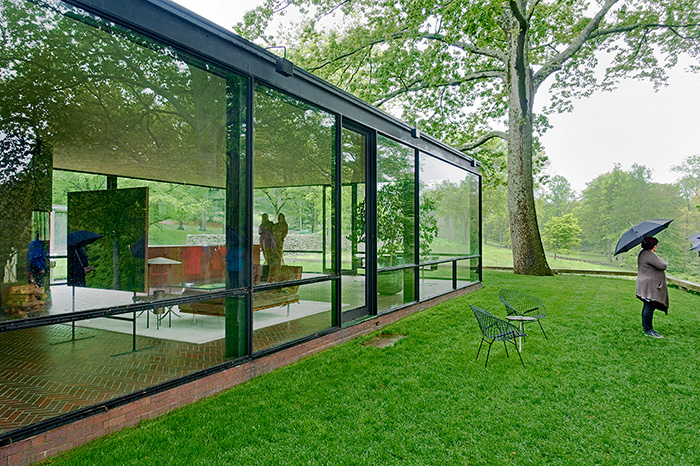
The Glass House, New Canaan, Connecticut — © Brian Rose
Yesterday, I toured the Philip Johnson Glass House with Cooper Union alumni. It rained the entire time we were there, but the atmosphere was beautiful, drenched in the vibrant green of early Spring. In the various structures on the estate, one can trace Johnson’s chameleon-like career, morphing from one architectural style to another.
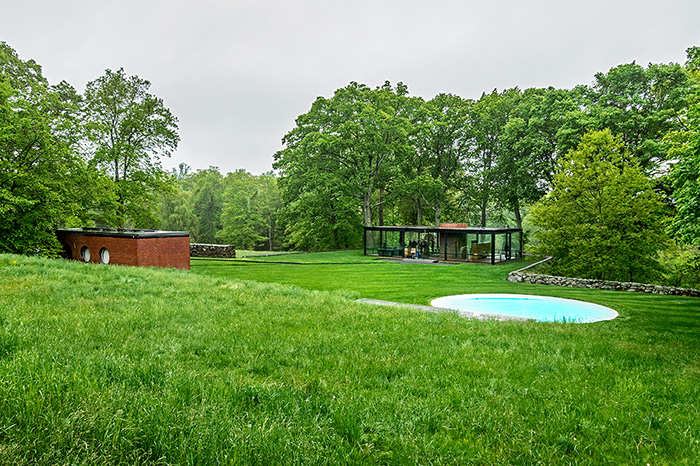
The Glass House, New Canaan, Connecticut — © Brian Rose
The Glass House itself, of course, is Johnson’s homage to Mies van der Rohe — which I have seen photographs of many times. What was most surprising to me was the landscape surrounding it. How the house sits on a plateau overlooking carefully orchestrated views, perhaps reminiscent of Olmsted’s urban pastorales, Central Park or Prospect Park.
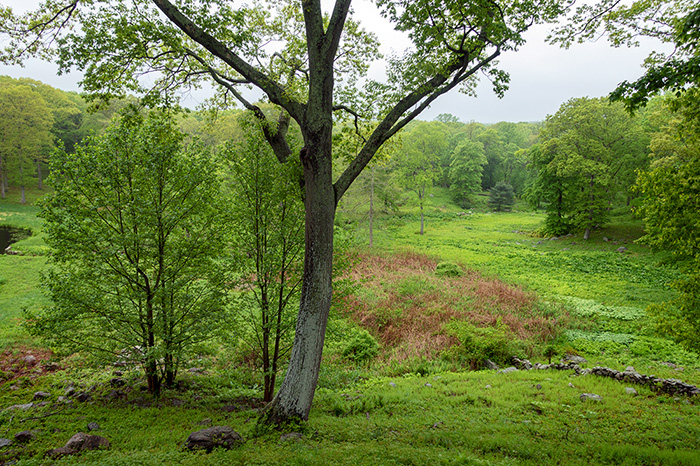
Glass House grounds — © Brian Rose
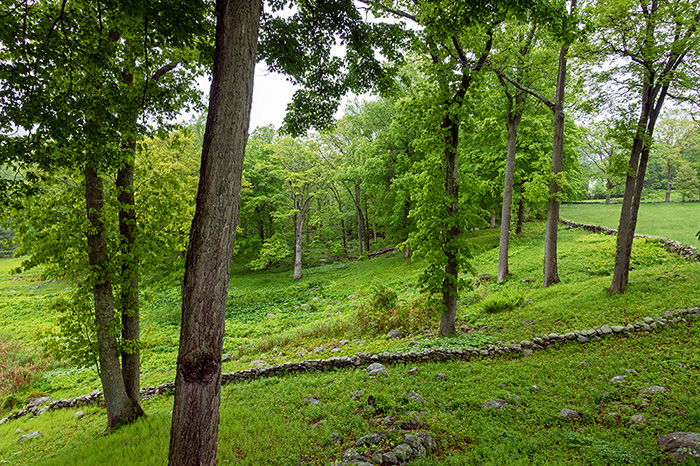
Glass House grounds — © Brian Rose
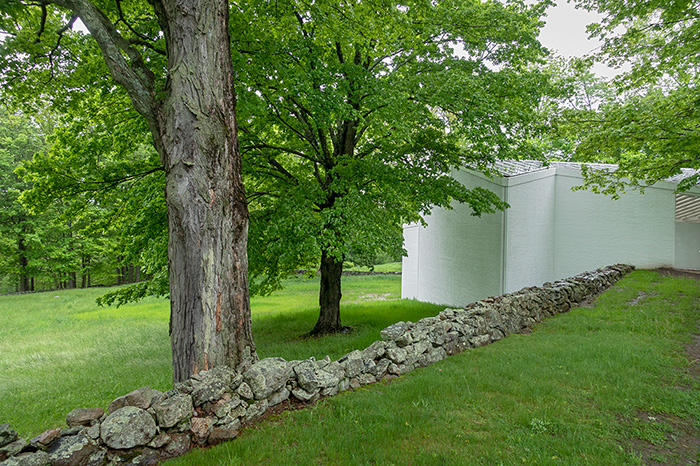
Sculpture Gallery — © Brian Rose
No doubt intended by Johnson, the Glass House is not simply “the house,” but the integration of the structures with the landscape. Inside and outside are blurred, and each of the separate buildings, or follies, have different purposes or play different symbolic roles.
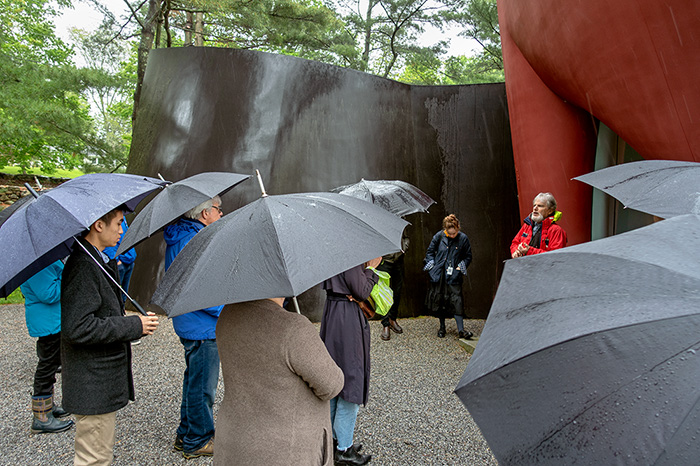
Da Monsta with tour group — © Brian Rose
We ended the tour at Da Monsta, Johnson’s last structure on the site. It is expressive of the non-rectilinear design of architects like Frank Gehry and Daniel Libeskind — deconstructivism — and Johnson, as always, followed others, and championed their work. That is his greatest legacy. He used his money, charm, and intelligence to elevate the place of modern architecture in our culture.
